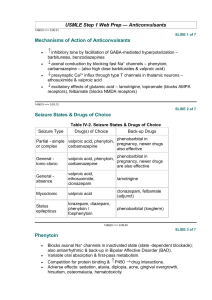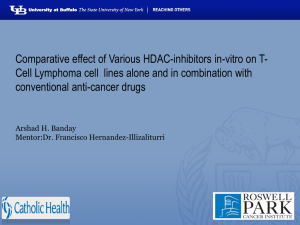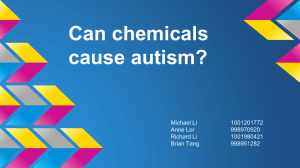Inhibition of HDAC isoforms Valproic acid HDACs Class I Class II
advertisement
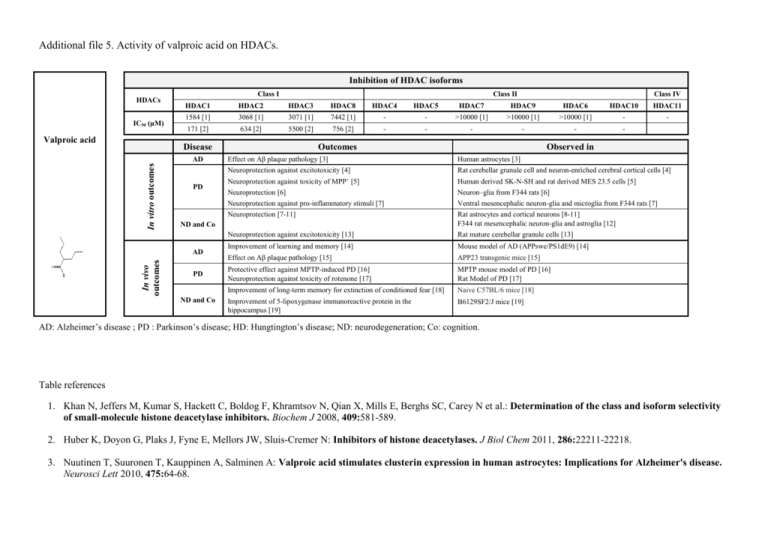
Additional file 5. Activity of valproic acid on HDACs. Inhibition of HDAC isoforms HDACs IC50 (µM) Valproic acid Class I HDAC3 HDAC8 HDAC4 HDAC5 HDAC7 HDAC9 HDAC6 HDAC10 HDAC11 1584 [1] 3068 [1] 3071 [1] 7442 [1] - - >10000 [1] >10000 [1] >10000 [1] - - 171 [2] 634 [2] 5500 [2] 756 [2] - - - - - - AD In vitro outcomes Class IV HDAC2 Disease PD Outcomes PD ND and Co Observed in Effect on Aβ plaque pathology [3] Neuroprotection against excitotoxicity [4] Human astrocytes [3] Rat cerebellar granule cell and neuron-enriched cerebral cortical cells [4] Neuroprotection against toxicity of MPP+ [5] Neuroprotection [6] Neuroprotection against pro-inflammatory stimuli [7] Neuroprotection [7-11] Neuroprotection against excitotoxicity [13] Human derived SK-N-SH and rat derived MES 23.5 cells [5] Neuron–glia from F344 rats [6] Ventral mesencephalic neuron-glia and microglia from F344 rats [7] Rat astrocytes and cortical neurons [8-11] F344 rat mesencephalic neuron-glia and astroglia [12] Rat mature cerebellar granule cells [13] Improvement of learning and memory [14] Mouse model of AD (APPswe/PS1dE9) [14] Effect on Aβ plaque pathology [15] APP23 transgenic mice [15] Protective effect against MPTP-induced PD [16] Neuroprotection against toxicity of rotenone [17] MPTP mouse model of PD [16] Rat Model of PD [17] Improvement of long-term memory for extinction of conditioned fear [18] Naive C57BL/6 mice [18] Improvement of 5-lipoxygenase immunoreactive protein in the hippocampus [19] B6129SF2/J mice [19] ND and Co AD In vivo outcomes Class II HDAC1 AD: Alzheimer’s disease ; PD : Parkinson’s disease; HD: Hungtington’s disease; ND: neurodegeneration; Co: cognition. Table references 1. Khan N, Jeffers M, Kumar S, Hackett C, Boldog F, Khramtsov N, Qian X, Mills E, Berghs SC, Carey N et al.: Determination of the class and isoform selectivity of small-molecule histone deacetylase inhibitors. Biochem J 2008, 409:581-589. 2. Huber K, Doyon G, Plaks J, Fyne E, Mellors JW, Sluis-Cremer N: Inhibitors of histone deacetylases. J Biol Chem 2011, 286:22211-22218. 3. Nuutinen T, Suuronen T, Kauppinen A, Salminen A: Valproic acid stimulates clusterin expression in human astrocytes: Implications for Alzheimer's disease. Neurosci Lett 2010, 475:64-68. 4. Leng Y, Chuang DM: Endogenous -synuclein is induced by valproic acid through histone deacetylase inhibition and participates in neuroprotection against glutamate-induced excitotoxicity. J Neurosci 2006, 26:7502-7512. 5. Kidd SK, Schneider JS: Protection of dopaminergic cells from MPP(+)-mediated toxicity by histone deacetylase inhibition. Brain Res 2010, 1354:172-178. 6. Wu X, Chen PS, Dallas S, Wilson B, Block ML, Wang CC, Kinyamu H, Lu N, Gao X, Leng Y et al.: Histone deacetylase inhibitors up-regulate astrocyte GDNF and BDNF gene transcription and protect dopaminergic neurons. Int J Neuropsychopharmacol 2008, 11:1123-1134. 7. Chen PS, Wang CC, Bortner CD, Peng GS, Wu X, Pang H, Lu RB, Gean PW, Chuang DM, Hong JS: Valproic acid and other histone deacetylase inhibitors induce microglial apoptosis and attenuate lipopolysaccharide-induced dopaminergic neurotoxicity. Neuroscience 2007, 149:203-212. 8. Marinova Z, Leng Y, Leeds P, Chuang DM: Histone deacetylase inhibition alters histone methylation associated with heat shock protein 70 promoter modifications in astrocytes and neurons. Neuropharmacol 2011, 60:1109-1115. 9. Marinova Z, Ren M, Wendland JR, Leng Y, Liang MH, Yasuda S, Leeds P, Chuang DM: Valproic acid induces functional heat-shock protein 70 via class I histone deacetylase inhibition in cortical neurons: a potential role of Sp1 acetylation. J Neurochem 2009, 111:976-987. 10. Jeong MR, Hashimoto R, Senatorov VV, Fujimaki K, Ren M, Lee MS, Chuang DM: Valproic acid, a mood stabilizer and anticonvulsant, protects rat cerebral cortical neurons from spontaneous cell death: a role of histone deacetylase inhibition. FEBS Lett 2003, 542:74-78. 11. Yasuda S, Liang MH, Marinova Z, Yahyavi A, Chuang DM: The mood stabilizers lithium and valproate selectively activate the promoter IV of brain-derived neurotrophic factor in neurons. Mol Psychiatry 2007, 14:51-59. 12. Chen PS, Peng GS, Li G, Yang S, Wu X, Wang CC, Wilson B, Lu RB, Gean PW, Chuang DM et al.: Valproate protects dopaminergic neurons in midbrain neuron/glia cultures by stimulating the release of neurotrophic factors from astrocytes. Mol Psychiatry 2006, 11:1116-1125. 13. Kanai H, Sawa A, Chen RW, Leeds P, Chuang DM: Valproic acid inhibits histone deacetylase activity and suppresses excitotoxicity-induced GAPDH nuclear accumulation and apoptotic death in neurons. Pharmacogen J 2004, 4:336-344. 14. Kilgore M, Miller C, Fass DM, Hennig KM, Haggarty SJ, Sweatt JD, Rumbaugh G: Inhibitors of class 1 histone deacetylases reverse contextual memory deficits in a mouse model of Alzheimer's disease. Neuropsychopharmacol 2009, 35:870-880. 15. Qing H, He G, Ly PTT, Fox CJ, Staufenbiel M, Cai F, Zhang Z, Wei S, Sun X, Chen CH et al.: Valproic acid inhibits A production, neuritic plaque formation, and behavioral deficits in Alzheimer's disease mouse models. J Exp Med 2008, 205:2781-2789. 16. Kidd SK, Schneider JS: Protective effects of valproic acid on the nigrostriatal dopamine system in a 1-methyl-4-phenyl-1,2,3,6-tetrahydropyridine mouse model of Parkinson's disease. Neuroscience 2011, 194:189-194. 17. Monti B, Gatta V, Piretti F, Raffaelli S, Virgili M, Contestabile A: Valproic acid is neuroprotective in the rotenone rat model of Parkinson's disease: involvement of -synuclein. Neurotox Res 2010, 17:130-141. 18. Bredy TW, Barad M: The histone deacetylase inhibitor valproic acid enhances acquisition, extinction, and reconsolidation of conditioned fear. Learn Mem 2008, 15:39-45. 19. Yildirim E, Zhang Z, Uz T, Chen CQ, Manev R, Manev H: Valproate administration to mice increases histone acetylation and 5-lipoxygenase content in the hippocampus. Neurosci Lett 2003, 345:141-143.
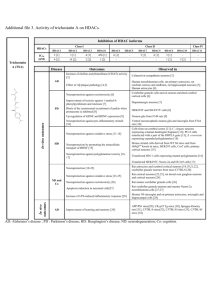
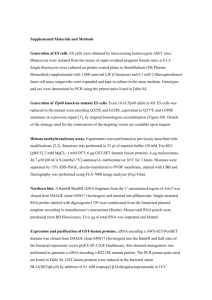
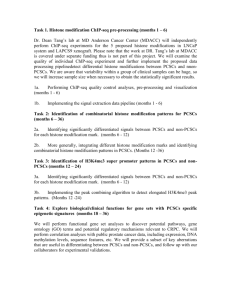

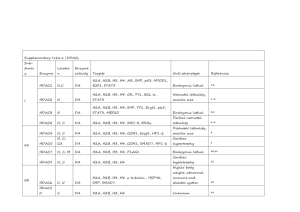
![Additional file 6. HDAC6 specific inhibitors M344 [1] Thiolate](http://s3.studylib.net/store/data/006756657_1-1db398cb64715d1936bea90dee583c4e-300x300.png)

